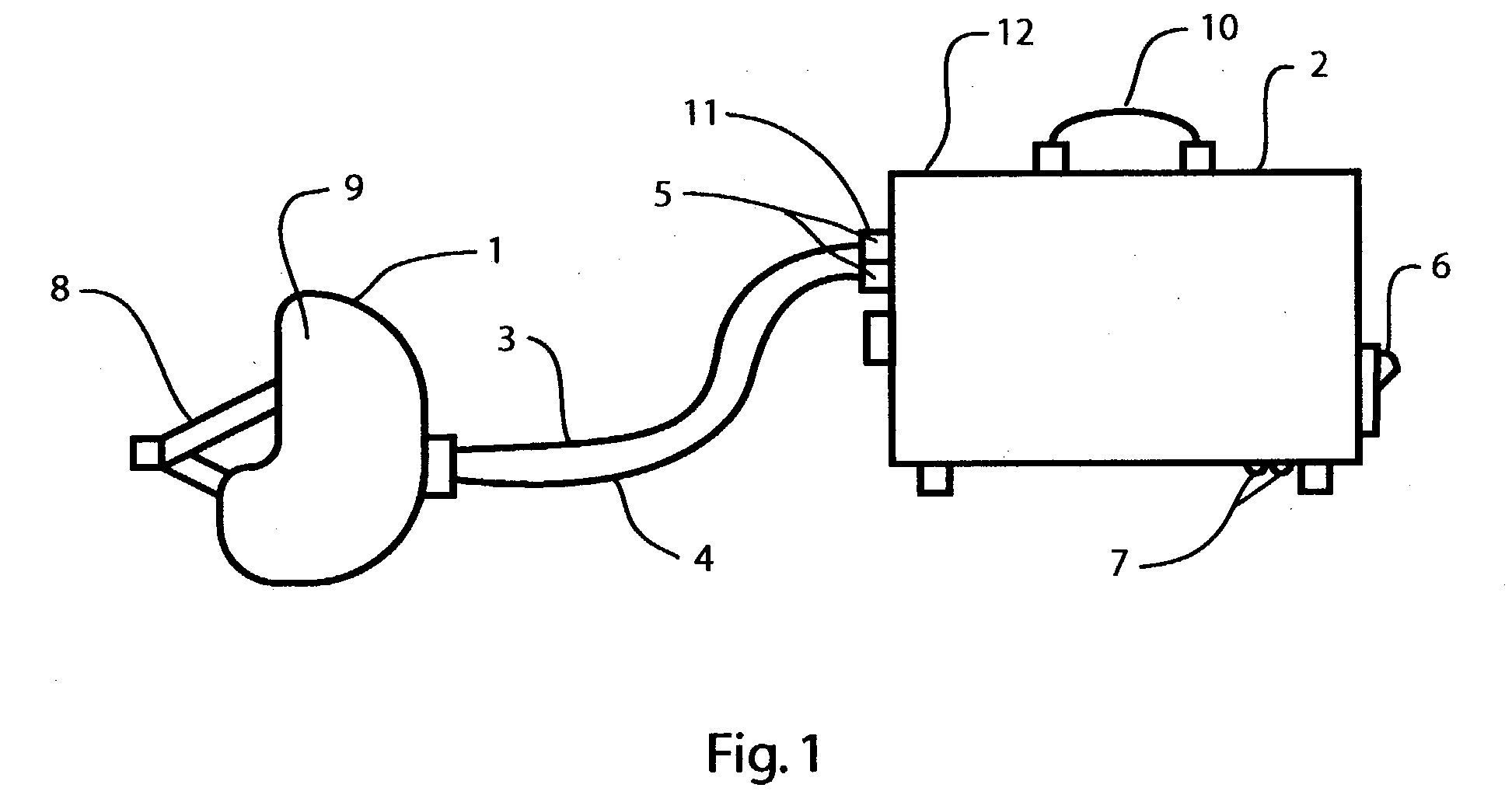Method and device for rapidly inducing hypothermia
a rapid induction and hypothermia technology, applied in medical science, surgery, diagnostics, etc., can solve the problems of secondary ischemic brain injury, critical or terminal rise in intra-cranial pressure, cell death and brain function loss, and patients suffering from stroke, cardiac arrest, or head trauma,
- Summary
- Abstract
- Description
- Claims
- Application Information
AI Technical Summary
Problems solved by technology
Method used
Image
Examples
Embodiment Construction
[0046] The thermal battery may be constructed to be non-rechargeable where within the housing are two chambers where each chamber contains a chemical. The thermal battery is manufactured, sold, and stored where the two chemicals are isolated from each other by chamber walls. Prior to use, the chemicals are mixed together to initiate an exothermal reaction where the reactants are in thermal contact with the heat exchanger and the exothermal reaction results in cooling of the saline as it passes through the heat exchanger. A means is provided for the user to quickly and easily initiate the exothermal reaction by providing a mechanism to disrupt the walls of the chambers separating the two chemicals thereby allowing the two chemicals to mix by diffusion.
[0047] The body cooling system disclosed above may be configured where a thermal battery, as a separate component is not required for operation, instead, ice may be placed into the reservoir, where the ice in the reservoir provides body...
PUM
 Login to View More
Login to View More Abstract
Description
Claims
Application Information
 Login to View More
Login to View More - R&D
- Intellectual Property
- Life Sciences
- Materials
- Tech Scout
- Unparalleled Data Quality
- Higher Quality Content
- 60% Fewer Hallucinations
Browse by: Latest US Patents, China's latest patents, Technical Efficacy Thesaurus, Application Domain, Technology Topic, Popular Technical Reports.
© 2025 PatSnap. All rights reserved.Legal|Privacy policy|Modern Slavery Act Transparency Statement|Sitemap|About US| Contact US: help@patsnap.com



